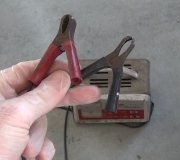Tuesday, May 7th, 2013 AT 11:28 AM
I have a 2002 Terracan with a new battery. The battery dealer on checking the charge for warranty validation informed me that it was not charging sufficiently. On removing the alternator, my mechanic/auto electrician found the voltage regulator burnt out, so that was replaced, along with new brushes (included with the new voltage regulator). Now all back together and still will not reach the required 14.2 volt charge required for the battery warranty. Any ideas why, even with a new voltage regulator, it would not charge enough? Currently showing around 13.7 volts, which can drop to below 13 with all lights on.



